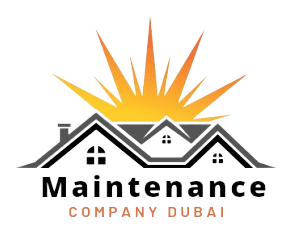Cleanliness, often touted as a virtue, is not merely a matter of aesthetics but a cornerstone of human civilization. From personal hygiene to maintaining...
Addressing Key Property Issues Before 2025
As we approach the year 2025, the realm of property ownership and management faces a multitude of challenges stemming from evolving societal needs, environmental pressures, and economic uncertainties. Maintenance Company Dubai From mitigating climate risks to fostering inclusive urban development, proactive measures must be taken to address pressing property issues and ensure sustainable, resilient, and equitable built environments. This comprehensive exploration delves into the critical property issues that demand attention before 2025, offering actionable strategies and innovative solutions to navigate the complex landscape of real estate, housing, and urban development.
Climate Change Adaptation and Mitigation
- Assessing Climate Risks:
Conduct comprehensive assessments of climate-related risks, including sea-level rise, extreme weather events, and heatwaves, to inform property planning and development strategies. Incorporate climate data and projections into decision-making processes to enhance resilience and mitigate potential impacts on property assets.
- Implementing Green Building Practices:
Promote the adoption of green building standards and sustainable design principles to minimize carbon emissions, enhance energy efficiency, and reduce environmental footprints. Integrate renewable energy systems, energy-efficient technologies, and passive design strategies to mitigate climate change while enhancing occupant comfort and well-being.
- Investing in Natural Infrastructure:
Embrace nature-based solutions such as green roofs, permeable pavements, and urban green spaces to manage stormwater runoff, mitigate urban heat island effects, and enhance biodiversity. Integrate green infrastructure into property development and retrofit projects to bolster climate resilience and foster ecological connectivity within urban landscapes.
- Enhancing Resilience in Coastal Areas:
Develop and implement adaptation strategies to address coastal erosion, flooding, and saltwater intrusion in vulnerable coastal communities. Invest in shoreline protection measures, habitat restoration projects, and floodplain management initiatives to safeguard coastal properties and infrastructure from the impacts of sea-level rise and extreme weather events.
Affordable Housing and Inclusive Development
- Promoting Affordable Housing Policies:
Advocate for policies and incentives that prioritize the development of affordable housing units and address housing affordability challenges for low- and moderate-income households. Implement inclusionary zoning ordinances, density bonuses, and tax incentives to incentivize the construction of affordable housing within mixed-income neighborhoods.
- Supporting Equitable Access to Housing:
Ensure equitable access to housing opportunities for marginalized and underserved populations, including minorities, immigrants, and persons with disabilities. Expand housing assistance programs, promote fair housing practices, and combat housing discrimination to foster inclusive communities and address systemic barriers to housing access.
- Investing in Community Development Initiatives:
Allocate resources towards community development initiatives that enhance neighborhood amenities, social services, and economic opportunities for residents of affordable housing developments. Foster partnerships between public, private, and nonprofit sectors to leverage resources and build capacity for community-driven revitalization efforts.
- Preserving Existing Affordable Housing Stock:
Implement strategies to preserve and rehabilitate existing affordable housing stock, including rent stabilization measures, property tax incentives, and financing mechanisms for affordable housing preservation projects. Prioritize the retention of naturally occurring affordable housing and historic properties with cultural significance to prevent displacement and maintain neighborhood character.
Smart Urbanization and Technological Innovation
- Deploying Smart Infrastructure Solutions:
Harness the power of technology and data-driven solutions to optimize urban infrastructure systems, including transportation, energy, water, and waste management. Implement smart city initiatives such as intelligent traffic management, smart grids, and sensor-based monitoring systems to enhance efficiency, sustainability, and resilience in urban environments.
- Integrating Digital Planning Tools:
Utilize advanced modeling and simulation tools, including geographic information systems (GIS), building information modeling (BIM), and virtual reality (VR) platforms, to support evidence-based decision-making and collaborative urban planning processes. Foster interdisciplinary collaboration among planners, architects, engineers, and policymakers to integrate digital tools into the urban planning and design workflow.
- Promoting Innovation Districts and Tech Hubs:
Foster the creation of innovation districts and technology hubs that attract talent, investment, and entrepreneurship to urban centers. Support the development of mixed-use environments that blend office spaces, research facilities, incubators, and residential units to catalyze innovation ecosystems and drive economic growth in knowledge-based industries.
- Embracing Mobility Solutions:
Embrace emerging mobility solutions, including electric vehicles (EVs), autonomous vehicles (AVs), and shared mobility services, to reduce congestion, air pollution, and carbon emissions in urban areas. Invest in multimodal transportation infrastructure, including bike lanes, pedestrian-friendly streetscapes, and integrated transit networks, to promote sustainable and equitable mobility options for all residents.
Health and Well-being in the Built Environment
- Designing Healthy Buildings:
Prioritize human health and well-being in building design and construction by implementing evidence-based design principles that promote indoor air quality, daylighting, thermal comfort, and acoustic performance. Incorporate biophilic design elements, such as natural materials, greenery, and access to outdoor spaces, to enhance occupant productivity, creativity, and overall satisfaction.
- Creating Active and Accessible Spaces:
Foster the creation of active and accessible spaces that promote physical activity, social interaction, and community engagement. Design walkable neighborhoods, vibrant public spaces, and inclusive recreational facilities that cater to diverse age groups, abilities, and interests, fostering a sense of belonging and social connectedness among residents.
- Addressing Environmental Justice Concerns:
Prioritize environmental justice considerations in land use planning and development decisions to address disparities in access to healthy environments and resources. Engage with frontline communities and stakeholders to identify and mitigate environmental health risks, including pollution, contamination, and inadequate access to green space and amenities.
- Promoting Sustainable Food Systems:
Support the development of sustainable food systems and urban agriculture initiatives that improve access to fresh, nutritious food and promote food security in underserved communities. Encourage the integration of community gardens, urban farms, and food distribution networks into neighborhood planning efforts to enhance local food resilience and promote healthy eating habits.
Resilient Infrastructure and Disaster Preparedness
- Investing in Infrastructure Resilience:
Invest in resilient infrastructure systems that can withstand and recover from natural disasters, including floods, hurricanes, earthquakes, and wildfires. Incorporate climate resilience considerations into infrastructure planning, design, and construction to minimize vulnerability and ensure the continuity of essential services during extreme events.
- Implementing Risk Reduction Measures:
Implement risk reduction measures, including floodplain management, coastal retreat, and wildfire mitigation strategies, to minimize property damage and protect vulnerable communities from the impacts of climate change-induced disasters. Foster collaboration among government agencies, utilities, and private sector stakeholders to coordinate disaster preparedness and response efforts.
- Enhancing Building Codes and Standards:
Strengthen building codes, zoning regulations, and land use policies to enhance resilience and promote safe, sustainable development in hazard-prone areas. Require new construction and redevelopment projects to adhere to resilient design standards, including elevated structures, storm-resistant materials, and green infrastructure requirements, to mitigate risks and protect life and property.
- Promoting Community Resilience Planning:
Facilitate community resilience planning processes that engage residents, businesses, and stakeholders in identifying and addressing local hazards, vulnerabilities, and adaptation strategies. Develop comprehensive resilience plans that integrate hazard mitigation, emergency preparedness, and recovery efforts to build capacity, foster collaboration, and enhance community resilience in the face of uncertainty and change.
Conclusion
In conclusion, the period leading up to 2025 presents a pivotal opportunity to address key property issues and shape the future of urban




